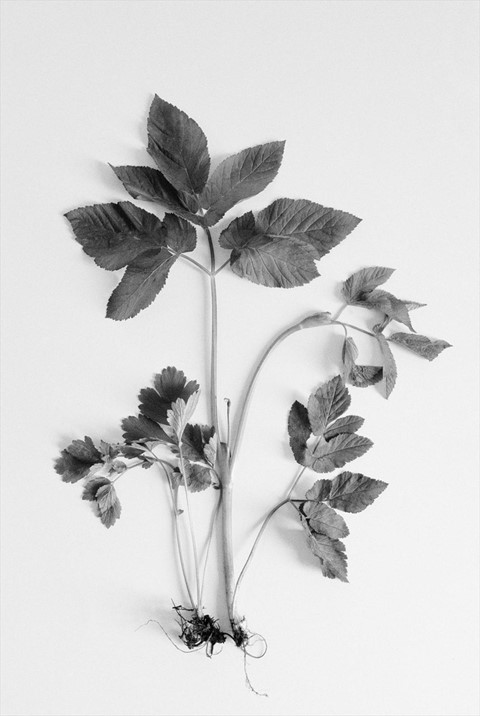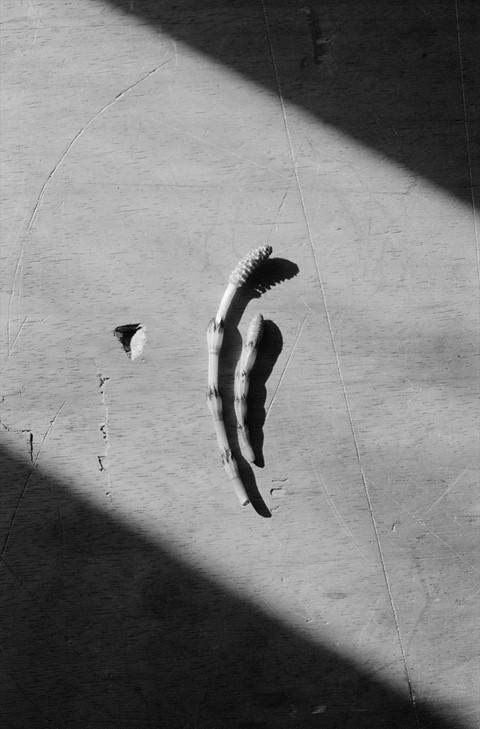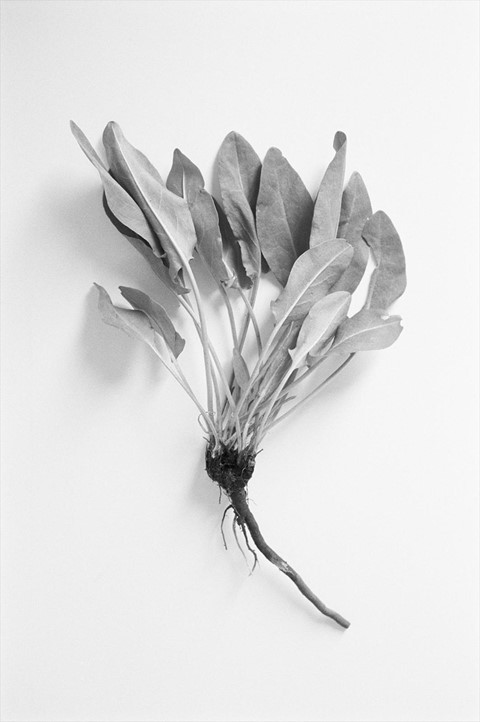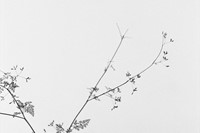A beautiful monograph from photographer Benjamin Huseby thrusts an unlikely protagonist into the spotlight: the humble weed
Over the last five years Nowegian photographer, and AnOther contributor, Benjamin Huseby has been collecting and photographing weeds found while journeying between his home and his studio in Berlin. The result is a stunning monograph, filled with captivating, delicately captured still lifes, that doubles as a field guide and eco-polemic thanks to the informative (and perfectly laid-out) accompanying text. "Weeds & Aliens is an occasionally arbitrary collection of photographs of some rather wonderful, useful plants, normally considered weeds," explains the book's introduction. "It is thought of as an introduction to the fragments of nature around us, even in the most urban of habitats. What is a wild plant, a native plant, an invasive or alien plant, a weed? The story of weeds is the story of man and civilisation, of agriculture and migration. There are no weeds in the wilderness, but, then again, can we truly speak of wild nature?" Here we present a selection of our favourite images and extracts from the book.
Rumex acetosa (above)
Common Sorrel
Sauerampfer (Wiesen- | Großer)
Polygonaceae | Dock family
Early spring to early winter.
Engsyre
Traditionally used in French cooking – mainly in soups and sauces – cutting through the richness of cream and butter with its acidity, sorrel has more recently been heralded as the lemon of the North in new Nordic cooking. Eat raw or cooked, but be aware that it loses its clear green hue when heated. The colour goes somewhat muddy, but it still tastes good. It will curdle milk. Also look out for sheep’s sorrel (Rumex acetosella), which is only found in acidic soil – near pine trees, for instance. Young leaves of common sorrel can be confused with those of lords and ladies (Arum maculatum), which are mildly poisonous. No other parts of the plant could be confused with sorrel, so, if you are new to sorrel or in doubt, just wait until you see a flower spike. The distinctive feature is that sorrel leaves have sharp, arrow-like tails at the bottom of each side of the stem, vaguely reminiscent of the mouth of a manta ray. To be avoided by people suffering from kidney stones because of its high content of oxalic acid.

Allium ursinum
Ramsons | Wild Garlic
Amaryllidaceae | Amaryllis family
Early spring to early summer.
Found in damp woods and locally in enormous quantities. Use in salads, soups, sauces or pesto. The flavour is just like garlic, only milder. The best taste is before flowering. Can superficially be confused with the poisonous lily of the valley before flowering. The unmistakable scent of garlic will be your best guide here. Should the whole forest floor not already reek of garlic, you can try crushing some leaves between your fingers.

Aegopodium podagraria
Gewöhnlicher Giersch
Apiaceae | Umbelliferae | Carrot family
Spring, summer and autumn.
Ground-elder
Skvallerkål
My mum calls this plant ‘tyskerkål’ (meaning German cabbage) – presumably on the basis of its invasive properties – a name that has stuck since the Second World War. It can be truly relentless and nearly impossible to get rid of if established in a shady area in your garden. I, however, love it. Culinarily speaking, the younger, smaller leaves are pretty much exactly like mitsuba (Cryptotaenia japonica) – a delicate Japanese herb used in soba soups or as a garnish with sashimi. I use it like mitsuba when young, though older leaves are great in salads. Mature leaves and stems can be steamed and used as a vegetable. A quick blanching of the herb will soften the flavour and make it more palatable to those who object to its more pungent celery and grassy notes. While containing hints of parsley and celery, its flavour really is neither.

Taraxacum officinale
Common Dandelion
Wiesen-Löwenzahn
Løvetann
Asteraceae | Daisy or Aster family
Spring to late autumn.
Although most of us no longer think of dandelion as an attractive plant, perhaps due to its ubiquity, this was not always the case. There is a story from Hardanger in Norway of a farmer who beat his son for picking a dandelion. Such a precious flower was meant to be left alone! Brits emigrating to the colonies would take seeds with them, to plant their favourite dandelions as a reminder of home. It is strange how time and space can shift one’s view of a plant’s beauty. Young leaves are great in salads, but, if you find them too bitter, try ‘blanching’ them, by putting a dark bucket or pot over them while they grow, to deprive them of light for a week, and you will get whiter and sweeter leaves. You can make a refreshing syrup from the flowers. The whole plant, including the root, is good for both food and medicine. Dandelions can hardly be confused – apart from between the hundreds of varieties and possibly the hawk’s-beards, none of which are poisonous.

Equisetum arvense
Common Horsetail
Acker-Schachtelhalm
Åkersnelle | Kjerringrokk
Equisetaceae | Horsetail family
Summer.
Fossil remains indicate that our contemporary and very common dwarf varieties originate from giants of the Carboniferous period. One can easily imagine that these plants grew among dinosaurs. Very young seed heads can be eaten raw or steamed, but they are a little fibrous. As a child, it is one of the first plants that I was told could be drunk as a tea and used as medicine. In Norway, it is commonly known to help with urinary complaints.
Weeds & Aliens by Benjamin Huseby is available from Donlon Books and Claire de Rouen in London as well as Dashwood Books in New York and by mail order worldwide from Torpedo Press.



